Audio & Signal Processing
Original Plugins
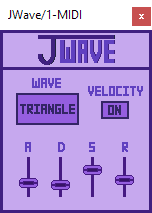
JWave
This synthesizer plugin enables the user to play MIDI notes, producing a simple waveform. The user can control the attack, decay, sustain, and release of the wave as well as toggle the sensitivity to velocity on and off. The user can select between the following wave patterns: sine, saw, ramp, triangle, pulse, white noise, and pink noise. Though the plugin is quite reduced, it is ideal when attempting to quickly construct the common waves used in music production and equipment testing.
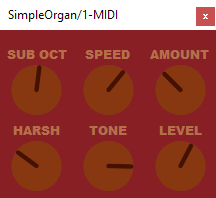
SimpleOrgan
This synthesizer plugin enables the user to produce a variety of organ-like tones. Based on additive harmonic generation, the user can readily alter the harshness, brightness, and level of their organ. It also features speed and amount knobs which enable the user to add a tremolo to their organ, common amongst many existing organs.
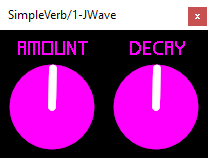
SimpleVerb
This effect plugin makes reverb easier than ever before. Featuring only two controls, amount and decay, the user can alter how long the reverb tail is, as well as how much of the reverb is blended into the track. Additionally, as the knobs are rotated, they shift from blue to red, adding a unique but simple visual to this plugin.
Digital Reconstruction of Guitar Pedals
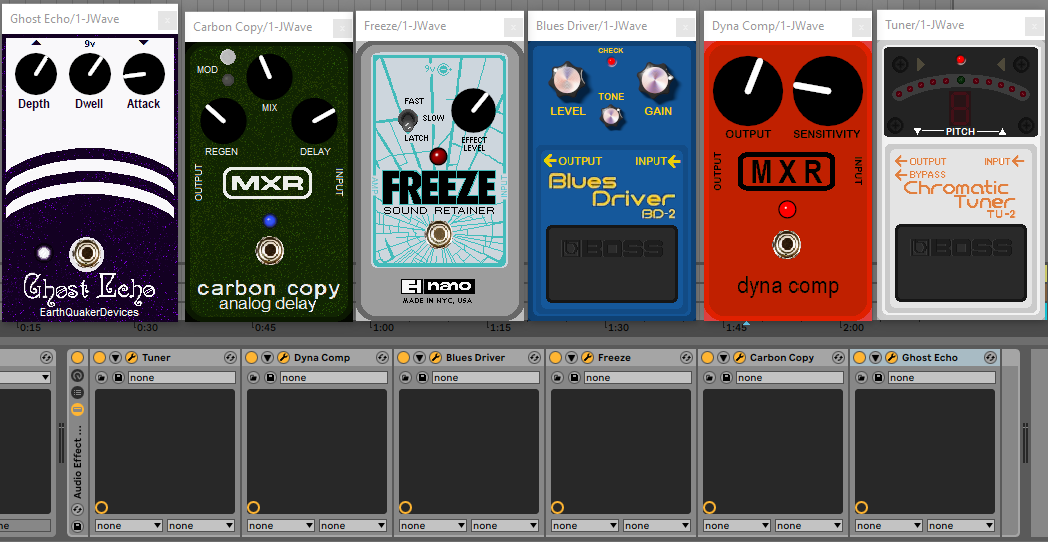
My background as a guitarist inspired me to explore digital signal processing as a way to better understand and recreate the tools I use to shape my sound. To practice these techniques, I modeled each of the effect pedals I own, carefully replicating both their distinctive sounds and their visual aesthetics.
Each of these modeled pedals was developed as a VST plugin, making them accessible within any Digital Audio Workstation. This process allowed me to bring the familiar, hands-on feel of my physical pedalboard into a flexible digital production environment.
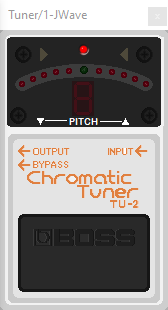
Chromatic Tuner
Modeled After: Boss TU-2 Chromatic Tuner
When this plugin is toggled on and a note is played, the plugin automatically finds the closest guitar string and displays the number of that string accordingly. When the note is sharp, the red LEDs to the right of the green LED engage. When the note is flat, the red LEDs to the left of the green LED engage. Once the note is brought to the correct pitch, the green LED in the center engages. This plugin is based on a fast Fourier transform (FFT) of the input signal, comparing the frequency of maximum amplitude to a set of reference frequencies. Some filtering is also implemented to improve the consistency of the plugin's readings, though it is worth noting that this plugin is strictly for monitoring and does not affect the output sound in any way.
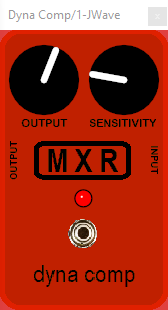
Compression Pedal
Modeled After: MXR's Dyna Comp
This plugin allows the user to compress the dynamics of their signal, bringing the quieter parts up, evening out the volume of the track. The plugin features an output knob, controlling the overall level, and a sensitivity knob, controlling how much the dynamics are squeezed. The attack and release were chosen to closely match those stated by the Dyna Comp's spec sheet, and the range of the output and sensitivity knobs were carefully designed to have a similar feel and response to that of the original pedal. This plugin is based on peak metering the rectified input signal, and adjusting the output level of the input signal as a function of its input level.
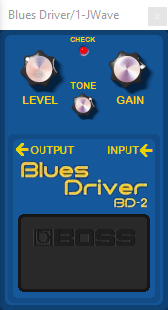
Overdrive Pedal
Modeled After: Boss BD-2 Blues Driver
This plugin allows the user to overdrive their signal, creating unique harmonics and adding color to their signal. The plugin features a gain knob, controlling the amount of overdrive, a level knob, adjusting the output volume, and a tone knob, filtering the signal to be darker or brighter. This plugin is based on a complex series of waveshaping functions and filters, closely matching the tonal characteristics of the original pedal.
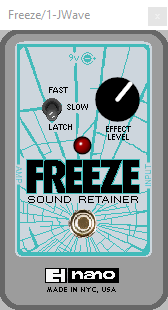
Freeze Sound Retainer
Modeled After: Electro-Harmonix's Freeze pedal
When this plugin is toggled, the current sound of the track is stored and perpetuated, droning on while the rest of the track plays over it. Like the original pedal, there is an amount adjustment along with three modes: fast, slow, and latch. The fast and slow modes only retain the sound while the button is held down, while the latch mode toggles the sound retaining function until pressed again. The plugin was built similarly to a reverb plugin, but reverberates a short snapshot of the signal from when the button was first pressed. There are also feedback systems in place to ensure the signal does not decay over long durations of time, while also avoiding a progressive increase in volume that would lead to clipping.
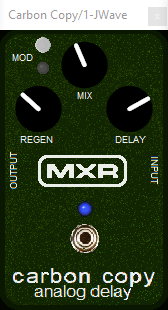
Analog Delay
Modeled After: MXR's Carbon Copy Analog Delay
This plugin acts like a typical delay plugin, repeating or echoing the signal at a rate defined by the delay knob. The regen knob alters how quickly the echo decays over time, and the mix knob alters the mix between the input signal and the repeated signal. Since the original pedal is an analog delay pedal, and is often associated with a warm tone and natural frequency shift as the delay tail fades, filtering and waveshaping were implemented in the feedback loop of the plugin to mimic this behavior. There also exists a modulation toggle, which slightly modulates the pitch of the looping signal, providing a warbling effect.
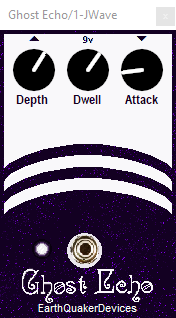
Reverb Pedal
Modeled After: EarthQuaker Devices' Ghost Echo
This plugin is a reverb plugin, with dark and full tonal characteristics, designed to closely match those of the original. It features three knobs, depth, dwell, and attack, which control the decay, amount, and attack of the effect, respectively. This plugin was built using a series of delays, feedback loops and filtering to achieve its sound.
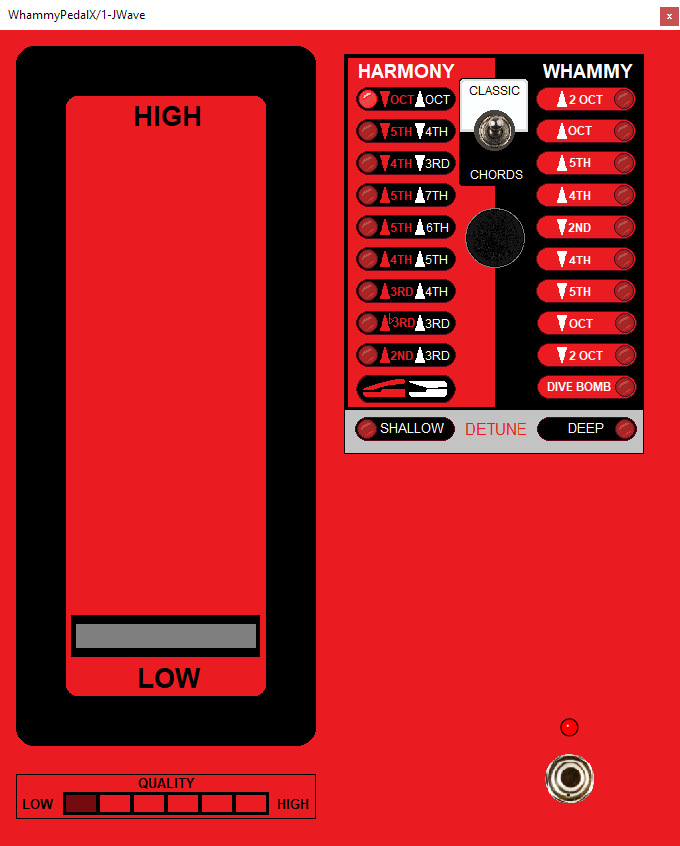
Whammy Pedal
Modeled After: DigiTech Whammy 5
This plugin features a wheel that adjusts the pitch shift or harmonic relationship, and a slider over where the expression pedal is on the original device. When on a whammy setting, as the slider is brought up, the pitch is shifted accordingly. When on a harmony setting, the slider controls the pitch of the harmony that is added to the original signal. This plugin was developed by taking the fast Fourier transform of the input signal, and modulating it based on the settings and expression state. A quality setting was also added to the bottom of the plugin, allowing the user to find the right balance between sound and latency for their scenario.